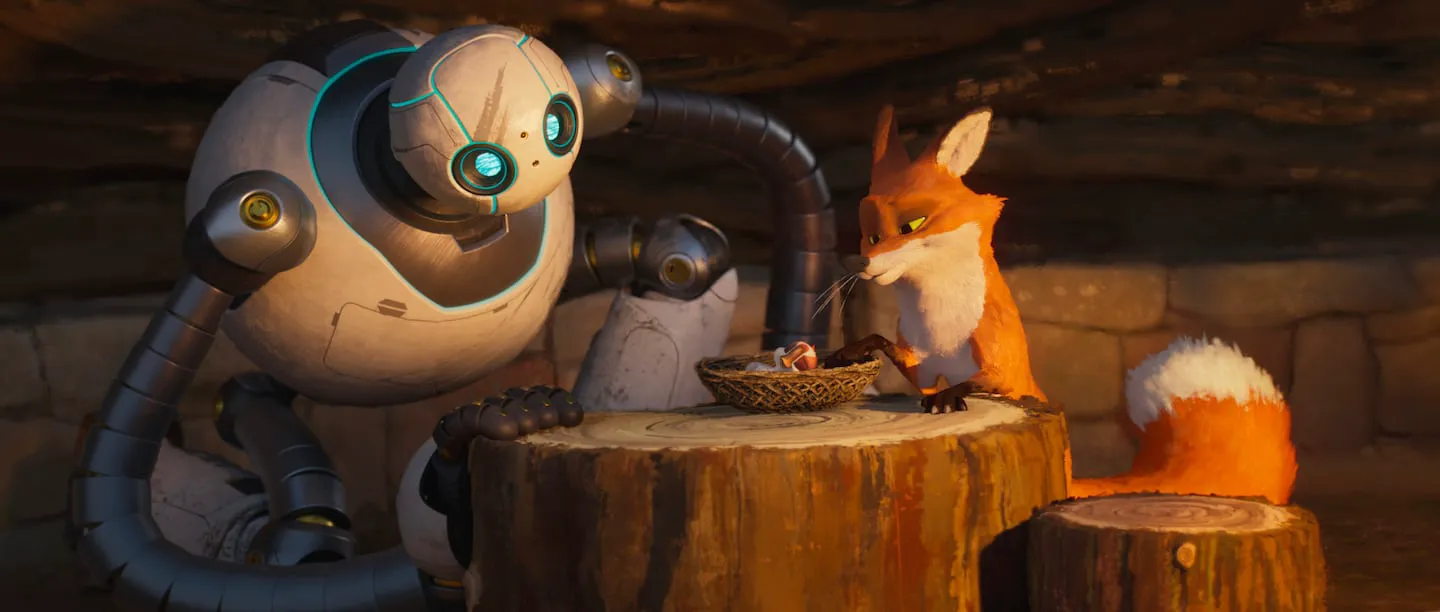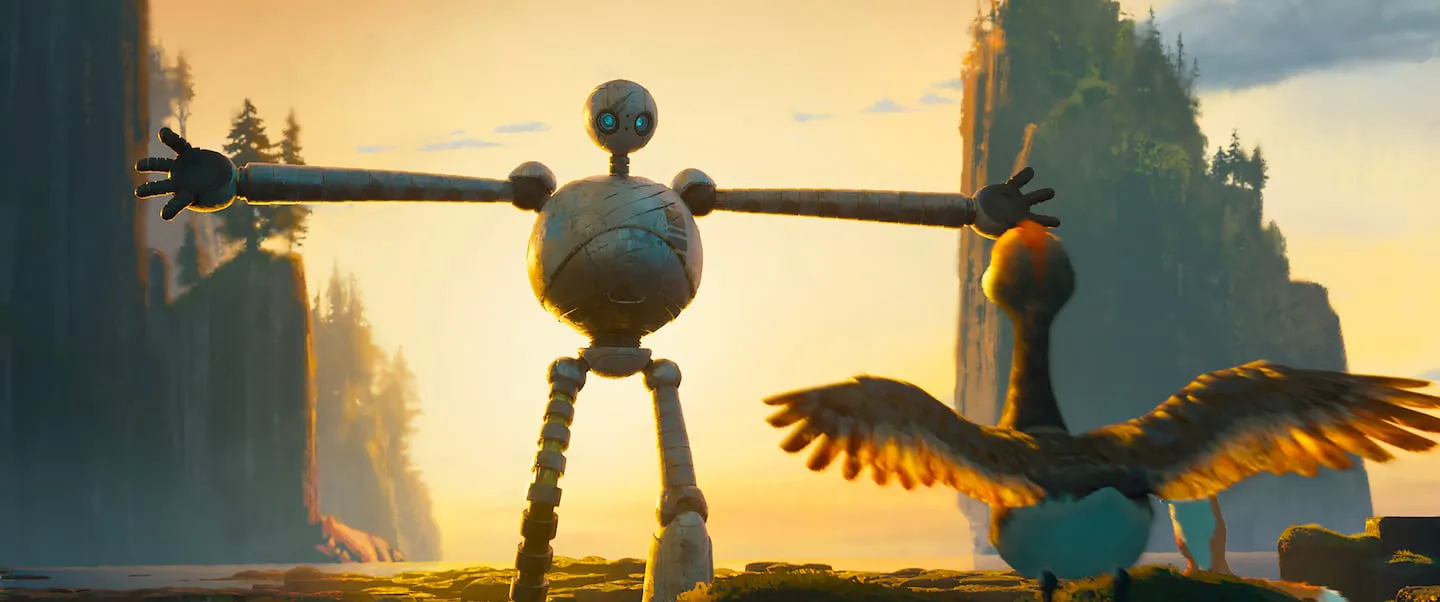The Allure of Nature and Robotics: A Look at “The Wild Robot”
In recent years, European animation has frequently explored two captivating themes: the robotic future and the untamed wilderness. From the French “Mars Express,” where characters effortlessly journeyed between Earth and Mars to hunt cybercriminals, to the Latvian-Belgian “Flow,” where future animals sought refuge from a global flood, and the Hungarian “Four Souls of Coyote,” delving into Native American mythology and a pre-human world, these themes have resonated deeply. We’ve also seen “White Plastic Sky,” where humans transform into trees to preserve life, and “Robot Dreams,” where animals and droids coexist as equals.
It seems major American studios are also heading in this direction, notably DreamWorks, the studio behind beloved franchises like “Shrek” and “Kung Fu Panda.” The production of their new potential hit was entrusted to Chris Sanders, the director of “How to Train Your Dragon” and “Lilo & Stitch.” Before 2007, Sanders contributed to Disney classics like “The Lion King,” “Beauty and the Beast,” and “Mulan.” A clear pattern emerges: anything touched by the two-time Oscar nominee instantly captures hearts and becomes a classic. Unsurprisingly, Sanders has once again exceeded expectations with “The Wild Robot,” a story of unexpected motherhood that is rapidly gaining fans and confidently marching towards an Oscar nomination.

Still from the animated film “The Wild Robot”
A Robot’s Unexpected Journey
Spring arrives on an uncharted island. After a heavy downpour, several crates containing state-of-the-art helper robots wash ashore. A curious otter family investigates one of these new neighbors and accidentally activates it. ROZZUM #7134 (voiced by Lupita Nyong’o) greets the inhabitants in multiple languages, offering assistance.
ROZZUM #7134, or Roz, is programmed to be a helpful assistant, fulfilling any request. To remain useful, Roz enters learning mode, mastering animal languages and distributing stickers with special codes for requesting help. Unfortunately, most of the island’s inhabitants are terrified by Roz’s appearance, making it impossible to fulfill her purpose. Before she can initiate the return process, Roz accidentally destroys a Canada goose nest, leaving only one egg intact. From this egg hatches Brightbill (voiced by Kit Connor). Roz’s first and only task becomes clear: raise the gosling, teach it to swim and fly before the autumn migration. Unexpectedly, Roz finds an ally in the cunning and solitary fox, Fink (voiced by Pedro Pascal).

Still from the animated film “The Wild Robot”
A Simple Story, Beautifully Told
“The Wild Robot” is based on the book of the same name by American author and illustrator Peter Brown. Chris Sanders boldly embraces the simple, childlike plot, transforming it into a vibrant and immersive adventure that viewers will want to revisit. This isn’t just due to the characters’ charm, melodic voices, and charisma. The secret lies in Sanders’ unique approach – it feels as though his goal is not just to finish the story, but to linger in the process.
“The Wild Robot” is full of original choices. It blends 3D technology with traditional 2D animation. Against the backdrop of stunning landscapes, the characters appear slightly fuzzy and blurred, as if they’ve just stepped out of the author’s pen. A fluffy fox tail brushes past a campfire, picking up a touch of orange, while the feathers of a fledgling duckling and a stern falcon almost merge into one. To fully appreciate the background details, multiple viewings are necessary – the changing seasons completely transform the island, revealing the richness of this fictional world.

Still from the animated film “The Wild Robot”
A Glimpse into the Future
The future world largely retains a familiar appearance. During the autumn migration, submerged bridges serve as pathways for whales, and only the tops of skyscrapers remain visible. Surviving humans live in enclosed, domed spaces, attempting to cultivate organic fruits and vegetables. The creators of “The Wild Robot” provide no details about the catastrophe that changed the world, but it’s not necessary. Sanders doesn’t try to add scale to the animation through the plot; he achieves it through computer-generated canvases, mechanical pens, and a talented team of artists.
The creators also maintain a sense of realism: from the very beginning, “The Wild Robot” reminds viewers of the inevitability of the food chain, dividing animals into predators and prey and refusing to shy away from death. During the winter freeze, Roz and Fink support the island’s inhabitants, but not everyone survives the harsh conditions of the changed world. And there are necessary meals: we all know that bears don’t eat sunlight, and owls are unlikely to befriend mice.
The box office success of “The Wild Robot” confirms that we all yearn for simple things, understanding, and natural beauty. At the beginning of the film, Fink tries to convince Roz that “kindness is not a survival skill,” but after a year with the robot, the fox delivers a new, opposite verdict and tries to guide the new generation onto the right path. “The Wild Robot” may be easily criticized for its simple plot twists and predictable ending, but if you look closely, you’ll see that this is precisely where its strength lies.